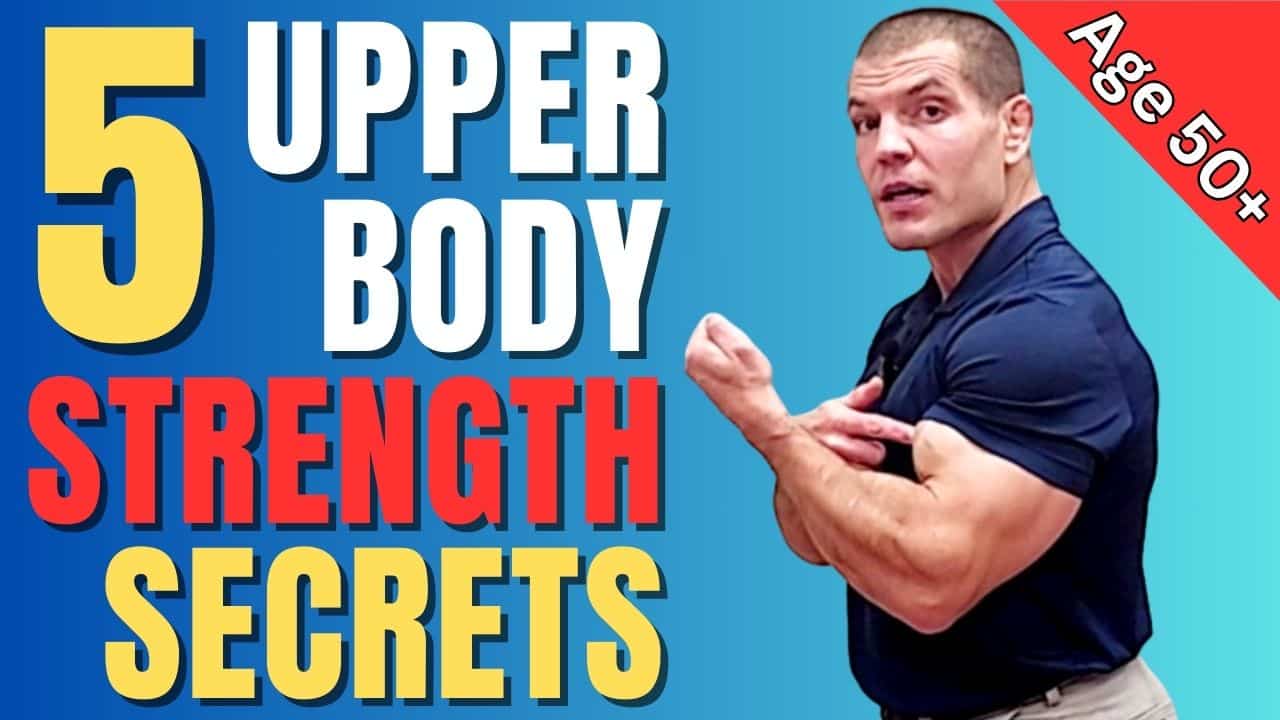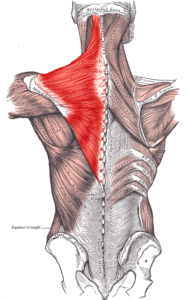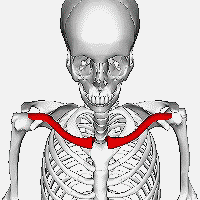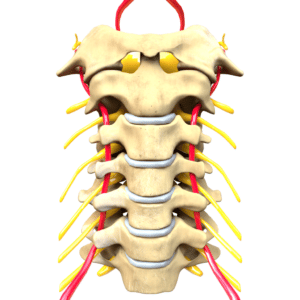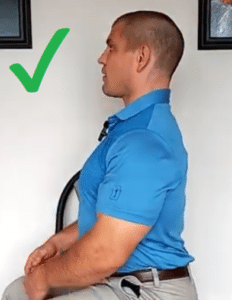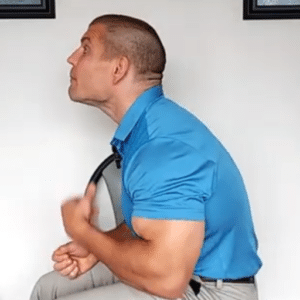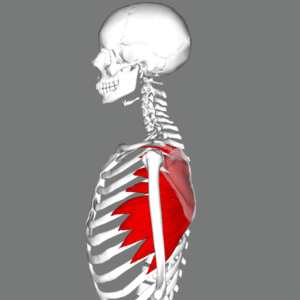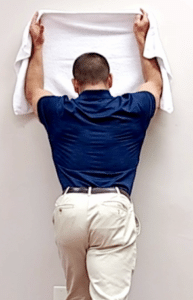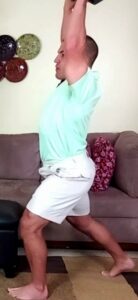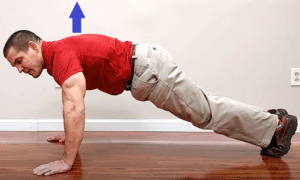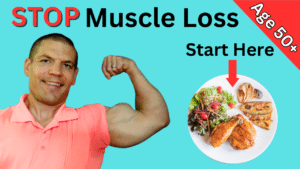If you're over 50, the battle with losing upper body strength is real.
On average, people lose 3 to 8% of their muscle mass every decade after 30 years old.
And it only gets worse after you hit age 60.
Fortunately, though, that's just an average, which means some people lose more, and some people lose less.
If you'd like to learn how you can do better than average, watch this video to learn 5 little-known secrets that people over 50 can use to maintain or even build upper body strength.
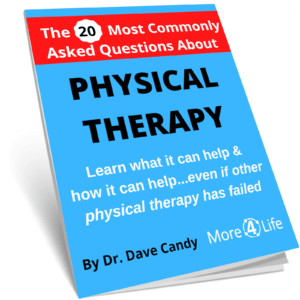
Upper Body Strength Secret #1: Start With Your Neck
Tip number one is starting with your neck.
Your upper essentially hangs from your neck.
You've got one little bony connection at your collar bone. Otherwise, your upper body is supported by muscles hanging from your neck and spine.
Therefore, anytime you use your arms, you're pulling on your neck. If you don't have a solid base to pull from, then your upper body isn't going to be as strong as you could be.
Additionally, all of the nerves to your arms come out of your neck.
Degenerative disc disease is increasingly common as you age.
By the time you become 50 years of age, about 80% of people without any pain at all have degenerative disc disease, and about 56% of people have disc height loss.
From: W. Brinjikji. Systematic Literature Review of Imaging Features of Spinal Degeneration in Asymptomatic Populations. AJNR Am J Neuroradiol. 2015 Apr; 36(4): 811–816.
When you lose disc height, that starts to pinch on the nerves that go down into your arms.
If you're pinching on those nerves, it can cause subclinical muscle strength loss, even if you don't have pain or noticeable loss.
I can't tell you how many times I've done a routine neurological screening on a patient and found substantial differences on one side versus the other in terms of strength. They weren't even aware of it because a lot of times you don't become aware of it until the problem gets really bad.
So how do you maintain space where the nerves come out of your neck and give yourself a solid base to pull from?
Well, one easy tip is to do a slight chin tuck.
That opens up the spaces where the nerves come out of your neck.
Conversely, being in an extended position pinches the nerves that come out of your neck.
So slightly tuck your chin when you're doing upper body exercises as well as during the course of your day. This maximizes the spaces where the nerves come out of your neck and gives your muscles a strong, solid base to pull from.
Upper Body Strength Secret #2: Strengthen Your Serratus Anterior
Tip number two is to strengthen your serratus anterior.
Now, what's a serratus anterior?
Most people are aware of your biceps, triceps, chest, and lats, but your serratus anterior is lesser known.
The serratus anterior is a serrated muscle that attaches to the front (anterior) side of your ribcage and then runs underneath your shoulder blade.
It's important in stabilizing your shoulder blade as you use your arms. It also moves your shoulder blades outward and upward as you press away from you or press something up over your head.
One easy way to strengthen your serratus anterior is by doing a wall slide.
Face towards the wall, put pressure into the wall with your arms, then slide your arms up the wall while maintaining pressure and hold about 10 seconds at the top.
Come back down and repeat that about 10 times, holding for 10 seconds each time.
If that gets too easy for you, you can add a resistance band or even do it with weights.
Doing a shoulder press overhead is a good way to strengthen your serratus anterior.
Additionally, if you're doing a push-up, going to the end range of the push-up and then doing a little plus is another good way to strengthen your serratus anterior.
Upper Body Strength Secret #3: Lead With Your Elbows
Tip number three is to lead with your elbows. That's really important when you're doing either pressing exercises or pulling exercises.
A lot of people focus too much on moving the weights that are in their hands, whether they're pushing them away or pulling them towards.
However, when you're pressing or pulling, you're using chest muscles or lat muscles to move your upper arm, and so your hands are really just grips or hooks in that case.
Focus on pulling the elbow to your side if you're doing a row or a lat pulldown.
If you're doing a pressing motion like a bench press or an overhead press, think about pushing your elbow upwards or pressing your elbows forward. Your hands are just holding on to the weight.
Upper Body Strength Secret #4: Work The Muscle, Not The Weight
This tip is really important for any strengthening exercise, whether it be upper body or lower body.
Don't focus too much on moving the weight but rather using the correct muscle to move the weight.
If you're doing a bicep curl, rather than just focusing on getting the weight from point A to point B, focus on contracting the muscle and feeling the right muscle work.
If you're doing a tricep extension overhead, don't focus on just getting the weight from point A to point B, but rather using the correct muscle and squeezing your triceps to get the weight overhead.
Upper Body Strength Secret #5: How Much, How Many, How Often
Tip number five is the one that people always ask about:
- How much weight?
- How many sets?
- How many reps?
- How often?
How often to exercise for upper body strength over age 50?
You need to train regularly, at least once but preferably two to three times per week.
If you're not training your muscles regularly, then you're getting them stronger then going back to baseline before your next training session.
You need to have a repeat stimulus before you go back to your baseline in order to appropriately gain muscle strength.
For most people, that's twice a week, or possibly three times per week.
How many sets and reps for upper body strength?
As far as sets and reps, overload is the main principle.
Don't get too caught up on the sets and reps initially.
If you're doing something that you're not used to and working your body to levels it's not used to, it's going to respond and get stronger.
Now if you want to be technical about it, you need to decide what your training goal is:
- Strength: the ability to move something heavy one (or a few) times
- Hypertrophy: increasing muscle size
- Endurance: the ability to move light to moderate weights a lot of times
Strength Training
If you're training for absolute muscle strength, the ability to move something heavy once, like lifting a suitcase into an overhead bin, then you're going to want to train with heavier weights for lower reps.
Usually that's 6 or fewer repetitions and doing it for four to six sets since you're doing fewer repetitions.
A set is a number of repetitions that you're able to do with good technique but no more.
A lot of people make the mistake of just saying, "I'm doing six repetitions or I'm doing 10 repetitions," and then stop.
You should be use a weight heavy enough that you can do six repetitions with good technique and no more if you're training for absolute strength.
If you can't maintain good technique, then the weight is too heavy.
If you can do more repetitions than your desired rep range with good technique, then your weight is too light.
Because you're training so heavy, you need a lot of rest in between sets.
It takes about three minutes for your muscles to fully recover their energy stores or ATP stores. Therefore, you really need to rest about 3 to 5 minutes between sets if you're training for absolute strength.
One mistake that I see people making is that they often do not work the muscle hard enough so they don't require much rest between sets.
Conversely, they may work hard enough, but then not allow appropriate recovery time so their subsequent sets suffer.
Training for Hypertrophy
Now, if you're training more for muscle hypertrophy, building muscle size and mass, then you want to use moderate weight with moderate reps.
That would be 6-12 or, more often, 8-12 repetitions.
Again, use a weight again that you can do 8-12 repetitions and no more with good technique.
When training for hypertrophy, you'll usually do 3-4 sets with 1-2 minutes rest in between.
Training for Muscle Endurance
Now, if you're training for muscle endurance, the ability to work longer without tiring out, you're going to use 12 or higher repetitions.
You may only need 2-3 sets with 30-60 seconds rest in between.
So those were the five tips to build or maintain upper body strength if you're over 50.
But wait, there's more....
None of those five tips are going to mean anything if you're not fueling your body properly.
Proteins make up the building blocks of your muscles. If you're breaking your muscles down with exercise but you don't have anything to build them back up, then you're not going to get any stronger.
Therefore, without enough protein in your diet, none of the other five things that I just mentioned are going to make any difference.
I didn't cover that this post because that's a broad enough topic that it deserves a post all on its own.
Check out this post: How Much Protein Do You Need Over 50 To Prevent Muscle Loss?
Need Help To Improve Upper Body Strength After 50?
If you're over 50 and live in the St. Louis area and need help to build or maintain upper body and/or lower body strength, we'd be happy to help you.
As board-certified orthopedic specialist physical therapists, we can help you even if you're not injured or suffering from pain.
If you'd like to learn how we can help you age strong, tap the button below to talk with one of our specialists about your goals.
Like this post? Here are some other posts you might enjoy:
3 Best Lower Back Strengthening Exercises For People Age 50+
Senior Strength Training: 7 Essential Exercises for Daily Life
Best Leg Strengthening Exercise For Seniors
3 Best Balance Exercises For Seniors To Improve Balance At Home

